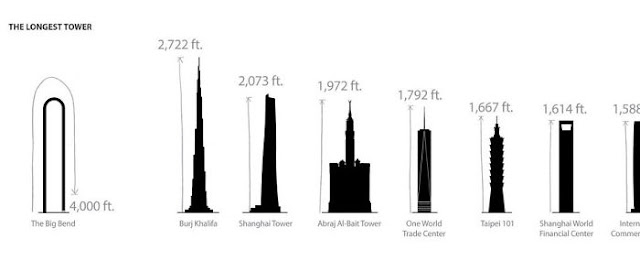Wow, incredible U-Shaped skyscraper
in New York Is unveiled and it would be beyond our imagination. The Manhattan’s
skyline is about to get thrown for a loop literally. The latest plans have
officially been revealed to construct the world’s first U-shaped skyscraper in
New York City, and it’s going to push the limits of architecture above the
curve. Therefore, the Big Bend is an aspiring venture being carried out by Oiio
Studio. Nevertheless the world-renowned design team is previously confronted by
the city’s land usage restrictions. If we be able to bend our u-shaped structure
instead of bending the zoning rules of New York we would be capable to create
one of the most admired buildings in Manhattan, they wrote on their official
website about their plan to circumvent the laws by building long instead of
tall. There is an undeniable obsession that resides in Manhattan because it is
made to be seen. There are many different ways that can make a building stand
out, but in order to do so the building has to mythical stand out.
If our plan carried out
successfully, The Big Bend will take the award of becoming the longest building
in the world, greater even Dubai’s Burj Khalifa in total length. The mega
U-shapped project will require an elevator system that can travel in loops and
curves to scale its unique shape, which sounds rather like a rollercoaster. We
don’t yet distinguish when to expect this world wonder on 57th Street, but
we’re bending over backwards to stay patient. Oiio Studio is famous with
building height measurements and seems that a property’s height operates as a
license for it to be expensive.




















































